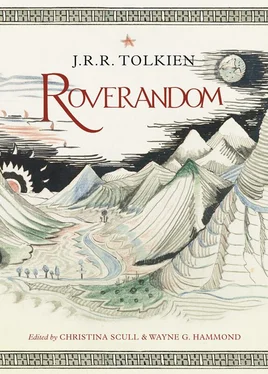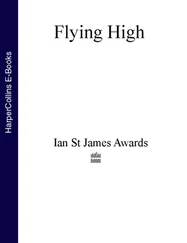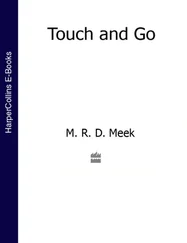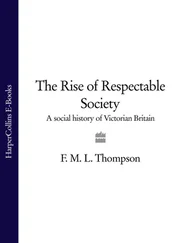Roverandom , where it is told how the Great White Dragon is disturbed by Roverandom and his friend the moon-dog and pursues them in a wild chase. The dragon is described as often a troublemaker: ‘Sometimes he let real red and green flames out of his cave when he was having a dragon-feast or was in a tantrum; and clouds of smoke were frequent. Once or twice he had been known to turn the whole moon red, or put it out altogether. On such uncomfortable occasions the Man-in-the-Moon … went down into the cellars, uncorked his best spells, and got things cleared up as quick as possible’ ( see here). In the present episode his pursuit of the two dogs is stopped by the Man-in-the-Moon only in the nick of time, by a magic spell shot at the dragon’s stomach. Because of this ‘the next eclipse was a failure, for the dragon was too busy licking his tummy to attend to it’ ( see here) – a reference to the notion, established in the earlier passage, that lunar eclipses are caused by dragon-smoke.
Elements of this chapter of Roverandom – one of which (a troublesome dragon on the moon) certainly was part of the story in September 1927, as shown by the dated illustration – also appear, in a strikingly similar form, in an unpublished portion of the story-letter Tolkien wrote to his children in December of that year in the guise of ‘Father Christmas’. In this, one of the remarkable series of ‘Father Christmas’ lettersTolkien wrote between 1920 and 1943, the Man-in-the-Moon visits the North Pole and drinks rather too much brandy while eating plum pudding and playing ‘ snapdragon’. He falls asleep and is pushed under the sofa by the North Polar Bear, where he remains until the next day. In his absence dragons come out on the moon and make such a great smother that they cause an eclipse. The Man-in-the-Moon is forced to hurry back and work a terrific magic to set things right.
The similarities betweenthis fiction and the Great White Dragon episode in Roverandom are too great to be coincidental; and from these one can reasonably suppose that Tolkien had Roverandom in his thoughts while writing his ‘Father Christmas’ letter in December 1927. Whether he introduced the notion of moon-dragons causing eclipses first in the letter, or drew for that purpose upon a conception already existing in Roverandom , it is impossible to say; but the two works must be related.
The Christmas holidays offered Tolkien time away from his academic responsibilities, in which Roverandom could have been written down; and although it is not definite that he did so in December 1927, one other clue points to that date, at least as a terminus a quo for the earliest (undated) extant text: the reference in Roverandom to a failed eclipse. In the earliest text ‘the next eclipse was a failure’ (as quoted above) is followed by the note ‘the astronomers [> photographers] said so’. And this indeed was the prevailing opinion, reported in the Times of London, of the total lunar eclipse that occurred on 8 December 1927 but was hidden from observers in England by clouds. On this point the 1927 ‘Father Christmas’ letter is once again useful, for it dates the eclipse that occurred in the Man-in-the-Moon’s absence precisely to 8 December, and thereby confirms Tolkien’s knowledge of the real-world event.
The earliest extant text of Roverandom is one of four versions among the Tolkien papers in the Bodleian Library, Oxford. Unhappily one-fifth of it has been lost, equivalent to the present chapter 1 and the first half of chapter 2. The remainder survives on twenty-two pages, written quickly in an occasionally difficult hand on a variety of blank sheets (torn possibly from school exercise books), and with numerous emendations. This text was followed by three typewritten versions, likewise undated, in the course of which Tolkien progressively enlarged the story and made many improvements of expression and detail but no major change of plot. The first typescript, on thirty-nine heavily corrected pages, was closely based on the manuscript and has been of great help in deciphering the less legible parts of the earlier version. But the typescript is notably distinguished from its predecessor towards the end, where the passage in which Rover is restored to his original shape and size (before almost an anticlimax, now a dramatic as well as humorous moment) was greatly expanded. The new text was entitled originally The Adventures of Rover , but Tolkien altered the heading in pen to Roverandom , thereafter the title he preferred.
The second of the three typescripts breaks off, apparently by conscious decision of the author, after only nine pages, with only a few lines on the final sheet. It extends from the beginning of the story to the point where the moon ‘began to lay its shining path on the water’ (cf. below, chapter 2, here). In addition, a fragment of writing is typed on what is now the verso of one sheet, which was immediately rejected by Tolkien and the text taken up again, further revised, and continued on the recto. As far as it goes, the second typescript incorporates revisions noted on the first and includes some further improvements. But it is perhaps more important to note the neat appearance of this version, compared with the first typescript. Tolkien now was concerned with matters of presentation, such as typing page numbers on the sheets rather than adding them later in pen, and breaking dialogue into paragraphs to indicate different speakers, whereas before (in what is clearly a working document) it was sometimes run on. Also the new typescript includes only a handful of manuscript emendations, all carefully made and for most part only of typographical errors.
This improved manner of presentation leads us to suspect that Tolkien prepared the second typescript for submission to his publisher, George Allen & Unwin, towards the end of 1936. At that time The Hobbit had been accepted with enthusiasm, and although it was only in production and had not yet proved a success, on the strength of it Tolkien was invited to submit other children’s stories to be considered for publication. He obliged by sending to Allen & Unwin his picture book Mr. Bliss , his mock-medieval story Farmer Giles of Ham , and Roverandom . If, as we think, the fragmentary second typescript of Roverandom was made for this purpose, it may be that Tolkien abandoned it because its text still was not wholly to his liking – or perhaps because, like the preceding drafts, it was made on sheets torn apparently from exercise books, with one long edge slightly ragged, and the author wished his work to have a more professional appearance.
Indeed the third and latest typescript of Roverandom is neatly typed (although not without emendations) complete on sixty sheets of commercial bond paper (although not entirely uniform); and it was here that chapter divisions were introduced, together with further changes, small but numerous, of dialogue and description, and of punctuation and the division of paragraphs. This is almost certainly the textthat Tolkien submitted to Allen & Unwin and that the chairman of the firm, Stanley Unwin, gave to his young son Rayner to appraise.
In a report dated 7 January 1937 Rayner Unwin found the story ‘well written and amusing’; but despite his positive review it was not accepted for publication. Roverandom was apparently one of the ‘short fairy stories in various styles’ that Tolkien had (it was thought) practically ready for publication in October 1937, as Stanley Unwin noted in a memo; but by then The Hobbit was so successful that Allen & Unwin wanted a sequel, with more about hobbits, above all else, and Roverandom seems never again to have been considered by either author or publisher. Tolkien’s attention now became primarily directed towards the ‘new Hobbit’, the work that would become his masterpiece: The Lord of the Rings .
Читать дальше












